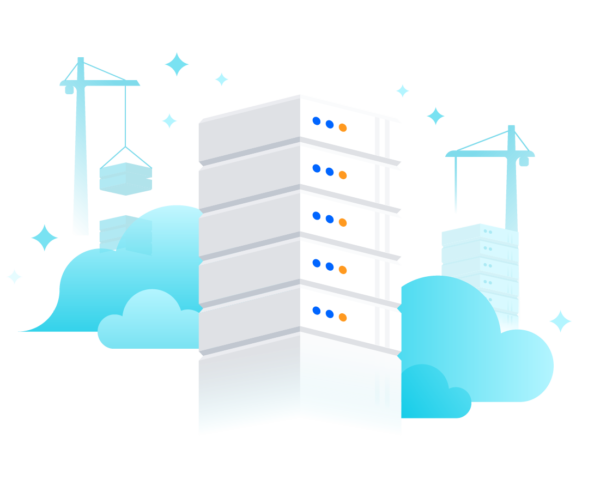Every enterprise, regardless of industry, has a set of business or mission objectives that measures their success. In order to achieve those objectives, teams commit to owning various tasks (i.e., workflows) – but it’s often more complicated than that. Business and mission objectives often have competing priorities, and occupy the same people and resources to deliver results, which is why finding the right tools to optimize efficiency in your organization is critical.
If you’re an admin of a self-managed environment, empowering your teams with the right tools likely falls to you. If you don’t have the right tools, you’re often stuck trying to contain fires without actually putting them out. For example, consider the amount of time you spend troubleshooting user access, or maintaining all the tools your teams use. Of course, you resolve those challenges as they arise, but that doesn’t leave a lot of time in the day to solve the root cause of those problems. That’s why it’s so essential to adopt enterprise tools that can help you put out those fires – for good.
How do your tools stack up?
So, how do you know if your enterprise tools are helping you put out the fires, so to speak? We suggest there are five core components to consider:
- Do your tools help standardize workflows?
- Can your tools monitor and report on your teams’ activities?
- Can your tools be used by all of your teams and act as part of your standardized toolset?
- Do your tools help you build out a user management process?
- Are your tools capable of automation?
While these areas can contribute to the efficiency of an organization, they can just as easily be causing inefficiencies too. How do your tools rank? Fill out the Workflow and Efficiency scorecard and find out.
Learn more about why having the right tools is so important – plus how to get started or continue on your efficiency journey – below.
Standardizing your organization’s workflows
An enterprise is traditionally made up of a large network of business units (BUs), departments, or programs, each with its own objectives, and often operating in a silo. This model made sense when each unit was only responsible for delivering on its own independent objectives. But when those objectives become intertwined and interdependent, the silo model starts to crumble. Teams tend to develop their own way of working, and that makes it more difficult for people to collaborate, especially when their tools don’t work together. Ultimately, this hinders their ability to effectively deliver on the organization’s objectives.
Every enterprise admin can benefit from a set of tools that can be used to implement standard workflows across their teams. While every team may have unique components specific to their roles, the right tools will allow you to establish some level of uniformity while still giving you the flexibility to customize components when necessary.
But remember, it’s important that you interview your teams and conduct an audit on the customizable components that you currently have in your instance to determine if they are needed or still in use.
Monitoring and reporting
Without having the right monitoring or reporting in your tools, you have no way of knowing if people are using the tools correctly. For example, if you conducted an audit of your custom fields as part of standardizing your workflows, what happens if teams start adding new custom fields, or resurrecting fields that you removed back into their projects? You’re right back where you started: people operating in silos, expecting you to manage it all.
Thus, it’s imperative that your tools give you the insight you need to take action. By monitoring events in your instance as they happen, you can quickly resolve any issues that are in conflict with the standards you’ve implemented.
Standardizing your tools
Driving collaboration between your teams isn’t just about developing workflows with your approved solutions. It’s also about reducing the number of tools you’re responsible for, in favor of managing only those that can be used universally across the organization. When you’re dealing with literally hundreds of tools, it can be a full-time job (and actually is a full-time job in some organizations) managing their lifecycle, determining when to they need to be upgraded, and understanding how each one functions in delivering on your organization’s objectives.
The best way to start building out a standardized set of tools is by determining which are critical to the success of your organization. Once you’ve audited all the tools that your organization uses, you can establish and implement ITAM best practices. And after you’ve minimized the number of tools you need to maintain, you’ll have more time to focus on other areas of the business.
Managing users and groups
Remember when your users could reach out to you, the admin, directly and get access to any tool that they needed? Or what about when your teams were small enough that you could give managers global permissions and they could create groups and add whomever they wanted? It started out as a good idea. You were no longer the bottleneck, and teams didn’t have to worry about getting access to the tools they needed. The problem is that this model doesn’t scale.
With enterprise growth, admins tend to find themselves saddled with user management responsibilities, which means inheriting all the legacy stuff too. In these cases, a good portion of admins’ days are spent granting access to tools and trying to add existing or new users to the right groups. To top it off, after years of users and groups being managed ad hoc, it’s difficult to know if groups are still in use or even valid. You’ve now become the bottleneck all over again.
Therefore, it’s important that your tools enable you to build out a user management process and are capable of archiving legacy groups and users. By establishing and implementing a process, you can develop a strategy that streamlines user management and reduces legacy data before it potentially impacts the performance of your tools.
Success story
Learn how AppDynamics built user group maintenance into their instance cleanup.
Automating your environment
One of the quickest ways to increase efficiency as an admin is to build automation into your environment – but it’s also the easiest task to put on the back burner. With more time-sensitive issues, such as granting your users access to the tools they need, it can be difficult to find the time to build scripts or identify areas that could be automated. Additionally, many tools don’t have the functionality that allows you to automate pieces of your environment. But if you want to drive innovation, your tools must have automation capabilities.
Two primary ways automation can be particularly important for admins of self-managed environments are upgrades and infrastructure.
Often, new features released in your organization’s tools could solve many of your teams’ needs, but the risk of “hosing” your system is very real. It can sometimes seem easier to stick with an older version of a product to reduce the risk of downtime in your tools or introducing potential security issues. To solve this problem, many admins have created build scripts to upgrade their test instances, which allows them to test new features before deploying them on production, thus reducing the risk to end users.
If you want to build strategic growth for the future, your tools must be deployable on a modern infrastructure that offers automation. For example, deploying your instance on infrastructure as a service (IaaS) places data management and security responsibilities on the cloud vendor, while giving you the flexibility to leverage their automation features, such as AWS System Manager Automation or Azure Automation. Even if you aren’t ready to modernize your infrastructure or leverage cloud computing, having tools that can be deployed to fit the changing demands of your organization is instrumental.
Choosing a set of enterprise tools with capabilities in these five core areas is essential to the success of your teams. Without the right tools, it’s almost impossible for your teams to deliver on your organization’s business or mission objectives, which causes you to spend most of your workings hours reacting to problems, rather than focusing on the success of the mission or future growth of your organization. With these five components top of mind, you can identify solutions that make life easier, for admins and the teams they support.



